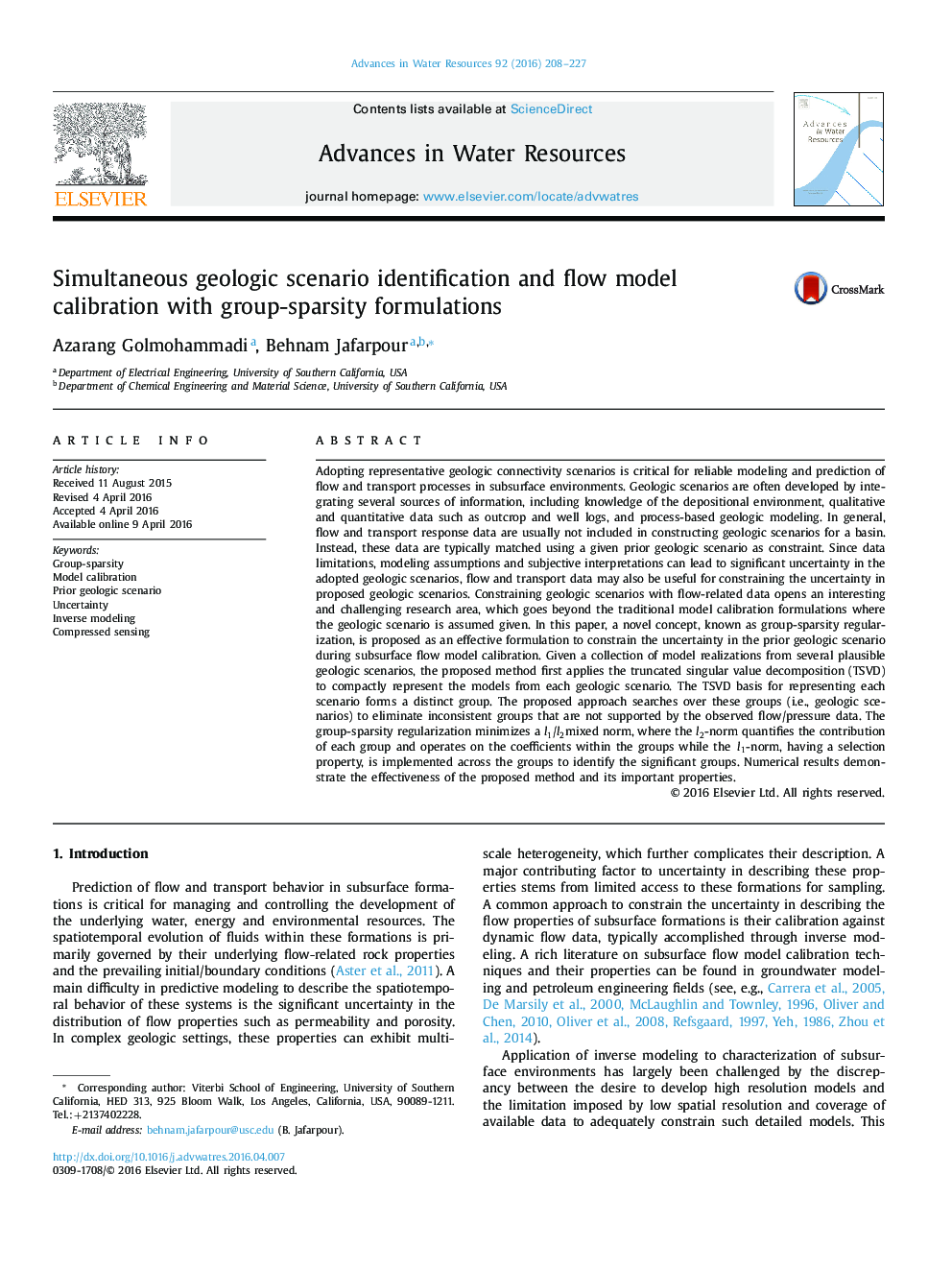| Article ID | Journal | Published Year | Pages | File Type |
|---|---|---|---|---|
| 6380825 | Advances in Water Resources | 2016 | 20 Pages |
Abstract
Adopting representative geologic connectivity scenarios is critical for reliable modeling and prediction of flow and transport processes in subsurface environments. Geologic scenarios are often developed by integrating several sources of information, including knowledge of the depositional environment, qualitative and quantitative data such as outcrop and well logs, and process-based geologic modeling. In general, flow and transport response data are usually not included in constructing geologic scenarios for a basin. Instead, these data are typically matched using a given prior geologic scenario as constraint. Since data limitations, modeling assumptions and subjective interpretations can lead to significant uncertainty in the adopted geologic scenarios, flow and transport data may also be useful for constraining the uncertainty in proposed geologic scenarios. Constraining geologic scenarios with flow-related data opens an interesting and challenging research area, which goes beyond the traditional model calibration formulations where the geologic scenario is assumed given. In this paper, a novel concept, known as group-sparsity regularization, is proposed as an effective formulation to constrain the uncertainty in the prior geologic scenario during subsurface flow model calibration. Given a collection of model realizations from several plausible geologic scenarios, the proposed method first applies the truncated singular value decomposition (TSVD) to compactly represent the models from each geologic scenario. The TSVD basis for representing each scenario forms a distinct group. The proposed approach searches over these groups (i.e., geologic scenarios) to eliminate inconsistent groups that are not supported by the observed flow/pressure data. The group-sparsity regularization minimizes a l1/l2mixed norm, where the l2-norm quantifies the contribution of each group and operates on the coefficients within the groups while the âl1-norm, having a selection property, is implemented across the groups to identify the significant groups. Numerical results demonstrate the effectiveness of the proposed method and its important properties.
Related Topics
Physical Sciences and Engineering
Earth and Planetary Sciences
Earth-Surface Processes
Authors
Azarang Golmohammadi, Behnam Jafarpour,
